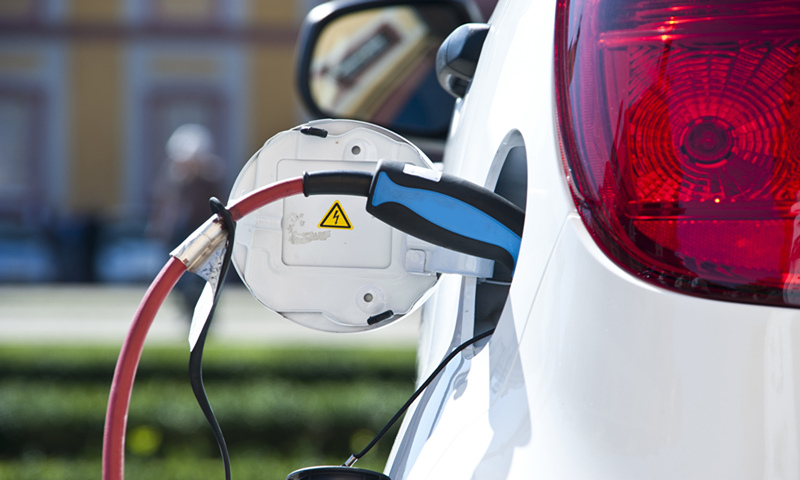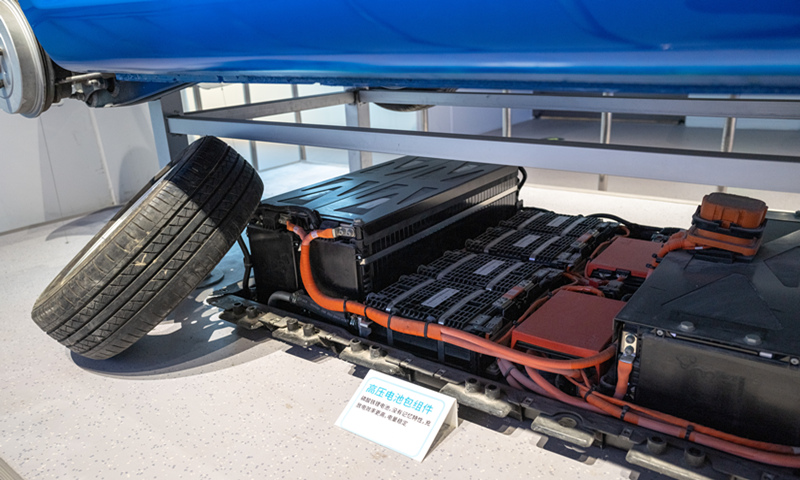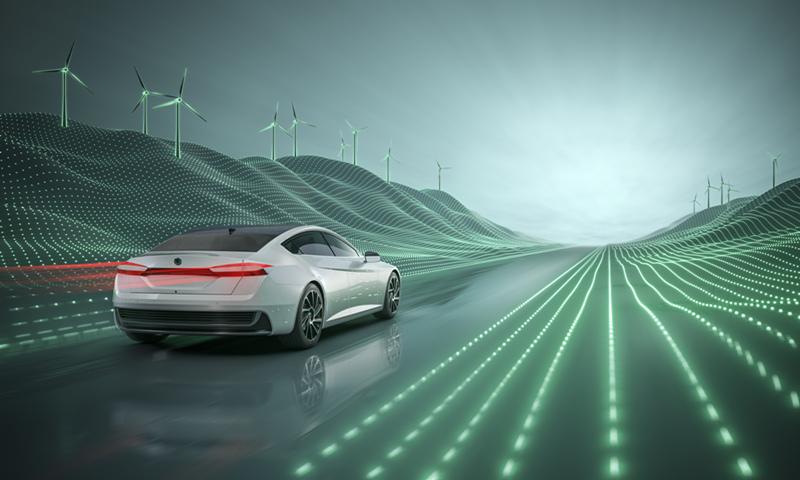
An NEV is being charged. Photo: VCG
With the sale of electric vehicles (EVs) in China is rising significantly, battery recycling has become another industry challenge, with analysts stating that government support is necessary to ensure recycling becomes an indispensable part on the EV industrial chain.
By March 2021, the number of new-energy vehicles (NEVs) in China reached 5.51 million. From January to May 2021, the sales volume of NEVs in China has reached 950,000 units, a year-on-year increase of 220 percent, according to statistics published by the China Passenger Car Association (CPCA).
"After years of development, China's EV industry has entered a new stage of growth. Green and low-carbon development is the focus of the next stage and a new growth pole, thus making power battery recycling an emerging industry," Zhang Xiaorong, director of the Cutting-Edge Technology Research Institute, told the Global Times on Tuesday.
With the rapid growth of the market, it is expected that the market size will exceed 100 billion yuan ($15.5 billion) by 2025. The power battery is mainly lithium battery, the service life of which is about 6-8 years. China will reach an estimated peak of new and old battery replacement in 2025. Until permeant solutions emerge, the power battery recycling cycle will not change much, said Zhang.
According to industry statistics, China's total decommissioned power batteries reached about 200,000 tons in 2020, and the figure will rise to about 780,000 tons in 2025.
Indispensable chain
At present, the Ministry of Industry and Information Technology (MIIT) requires car companies and battery enterprises to build more than 10,000 recycling outlets nationwide. Battery shelves that were empty two years ago are now full at many battery recycling companies.

Components of high-voltage battery pack of a Roewe NEV are seen in East China's Fujian Province, February 19, 2021. Photo: VCG
A battery recycle company based in Xinxiang, Central China's Henan Province, told the Global Times on Tuesday that batteries account for a large proportion of the price of EVs and NEVs.
"The establishment of battery recycling channels in these two years makes the price of second-hand NEVs relatively stable. One battery unit can sell for 6,000 to 7,000 yuan," said a manager surnamed Ju from the company.
But the structure of the battery pole is different, and many battery packs can only be disassembled by hand, at significant cost. What's more, in order to protect the key technical information, many vehicle manufacturers will also set access limits for the battery power management system, Ju noted.
"If the waste battery is not handled properly, it will cause great pollution to the environment. A 20-gram cell phone battery can pollute 1 square kilometer of land for about 50 years," said Zhang.
Power battery recycling mainly recycles the metal elements to avoid environmental pollution. The power battery for an EV contains heavy metals including nickel, cobalt and manganese, and lithium hexafluorophosphate in the electrolyte is easily hydrolyzed in the air environment to produce harmful substances such as phosphorus pentafluoride and hydrogen fluoride, which can cause significant environmental harm.
Standards to form
As the number of power batteries in China grows, unifying industry standards as much as possible will bring benefits to storage, disassembly and safety, said analysts.
Since 2018, a total of 27 enterprises have entered the list of "NEV Waste Power Battery Comprehensive Utilization Industry Specifications" issued by the MIIT. Therefore, at present, a bulk of dead batteries are transferred into the dismantling factories and small workshops without professional battery decomposition equipment, which is generally associated with safety risks and environmental risks, according to analysts.
"Domestic research institutions predict that 420,000 tons of power batteries will need to be recycled in 2022. However, China's power storage battery recycling and recycling system is not perfect, the relevant battery recycling standards and industrial chain have not been fully formed, where a proactive layout is necessary," Xu Heyi, former chairman of BAIC Group, said during an industrial forum recently.

An NEV on the road Illustration: VCG
Apart from standards, the costs of battery recycle are also a burden for enterprises, which analysts said is not favorable for the development of the whole NEV industry.
"China's battery recycling industry is now relatively small because it was difficult to make a profit in the early days. Because if the battery recycling is added to the life cycle management of the battery, the cost of the battery will increase greatly, which will push the price of NEVs. Compared with the price of gasoline vehicles, it will be less competitive for NEVs, which is unfavorable to the development of the industry. To promote the development of the industry, the government needs to provide subsidies and policies to support its sustainability," Zhang Xiang, an auto industry analyst, told the Global Times on Tuesday.
Domestic car companies such as BYD and BAIC Motor Corp have set up specialized battery recycling companies as battery recycling is an integral part of the automotive industry.
"Battery recycling can be used in two ways; one is taking old batteries apart and rearranging them into new battery packs before putting them into cars. The second is to fix old parts of batteries into stationary storage batteries, which are now mainly used for wind power generation, photovoltaic power generation and other energy storage equipment," said Zhang Xiang.
Due to the high technical requirements of automobile batteries, the existing power batteries are basically converted into energy storage batteries for recycling, Zhang added.
There are still many problems to be solved in the recycling of decommissioned power batteries, but the government and enterprises are also trying to explore feasible solutions. At the same time, some innovative models have prepared the ground for unified battery recycling and management.
For example, the power changing mode of NEVs operated by SAIC and NIO makes the centralized management of power batteries easier, and also establishes a smooth channel for the centralized recycling of batteries.






